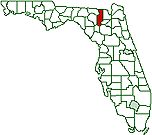EPA: No More Shades of Gray for Coal Ash in FL
Posted February 5, 2014 04:15 am
 TALLAHASSEE, FL -
The disposal of coal ash in Florida will become a
black-and-white issue starting in December.
TALLAHASSEE, FL -
The disposal of coal ash in Florida will become a
black-and-white issue starting in December.
The Environmental Protection Agency has announced plans to finalize the first-ever federal regulations for disposal of waste generated by coal-fired power plants - waste that contains toxins.
Jared Saylor, campaign director for Earthjustice, said the regulations will help create safer practices for the eight coal-fired power plants in the state.
"I can't think of a state that is more dependent on
clean water than Florida is, whether it's for drinking
or whether it's for recreation," he said. "Florida is
the Sunshine State. It's an area that's really built
around its tourism, and that tourism is dependent on
clean water."
The EPA's plans came after Earthjustice and other
environmental groups filed a lawsuit demanding such
regulations. Florida's plants generate 6.1 million tons
of coal ash every year. The state ranks seventh in the
nation for coal ash generation.
Coal ash ponds contain the byproduct of coal-fired power
generation, and at this point are not required to be
lined. Saylor said toxins such as mercury and lead have
been found in the groundwater supply around the ponds -
and it's time something is done.
"This is toxic waste that's essentially dumped into
unlined and unmonitored pits and landfills, right next
to these power plants," he said. "Our household garbage
is better regulated than coal ash that's coming out of
these facilities."
Currently, environmentalists and state regulators in
North Carolina are investigating a coal ash spill into
the Dan River, near the Virginia border. In 2008, a dike
ruptured at a coal-ash pond in Kingston, Tenn., and
released more than 1 billion gallons of coal ash. After
the disaster, EPA administrators said they would take
regulatory action.
Photos/graphics and links added by the Observer
Photo: southeastcoalash.org
